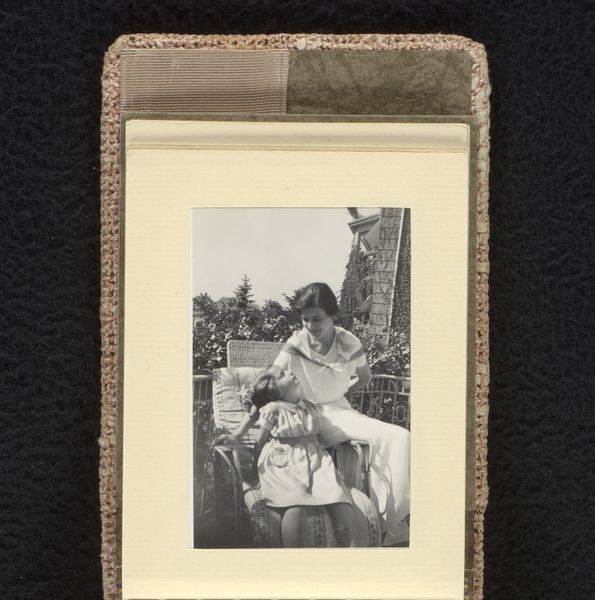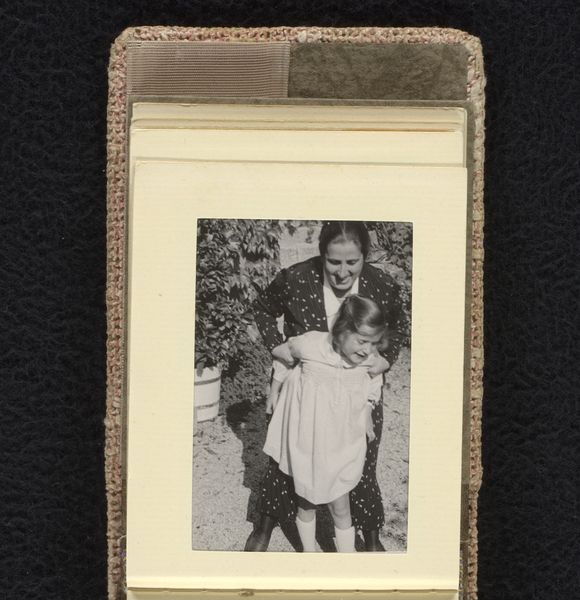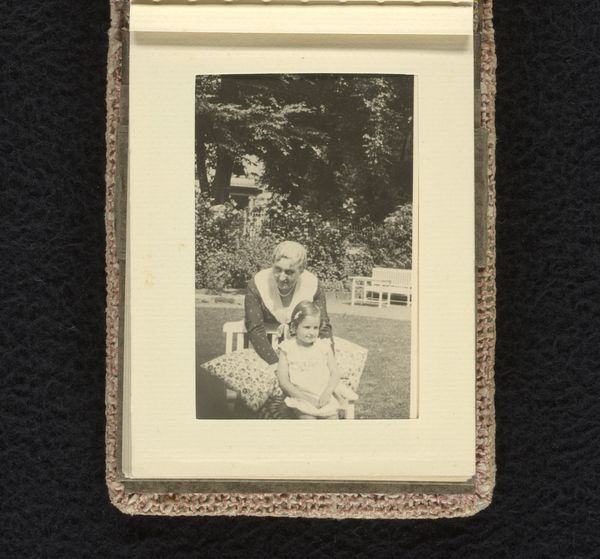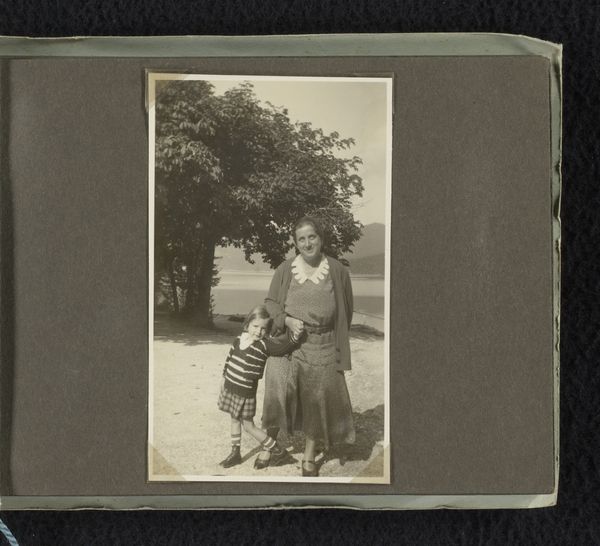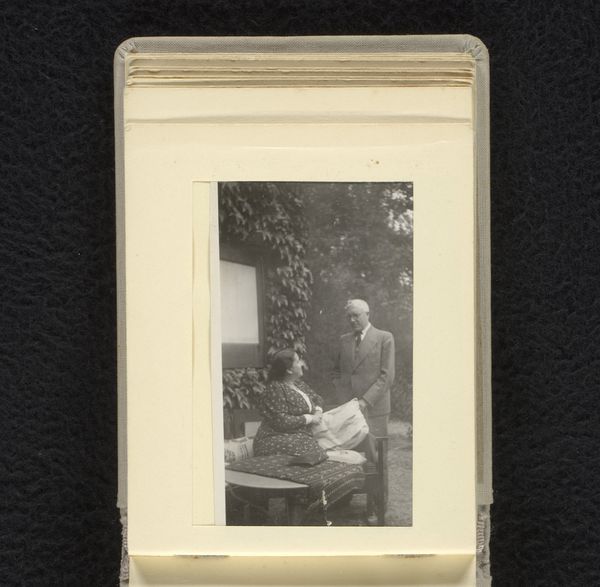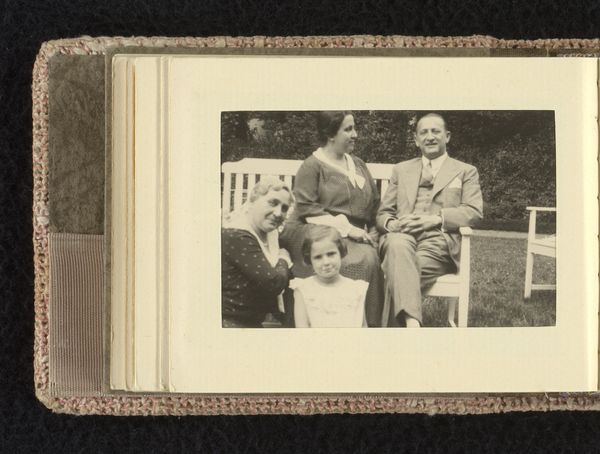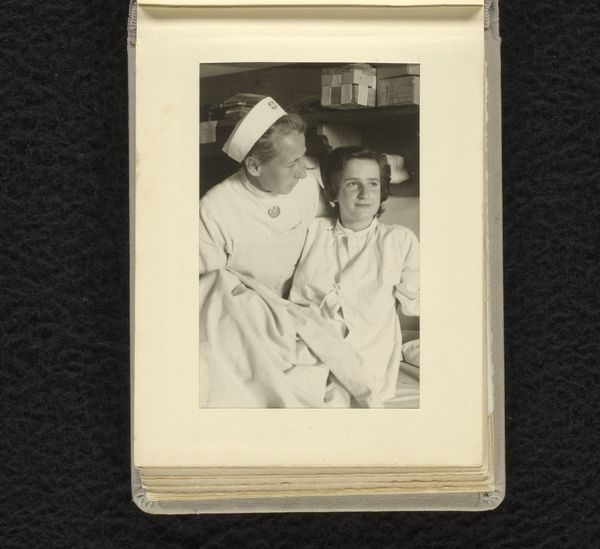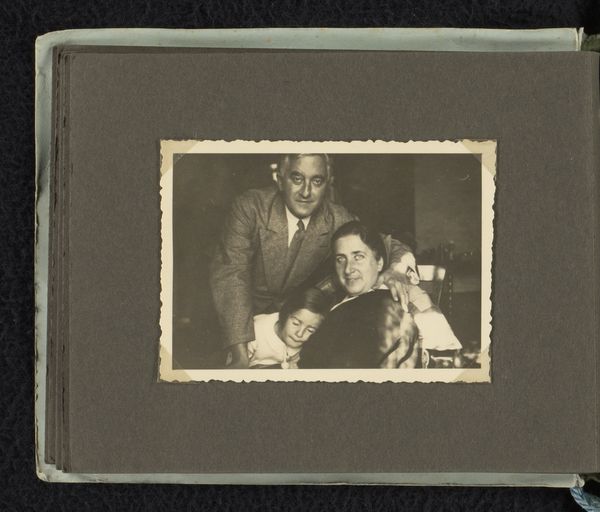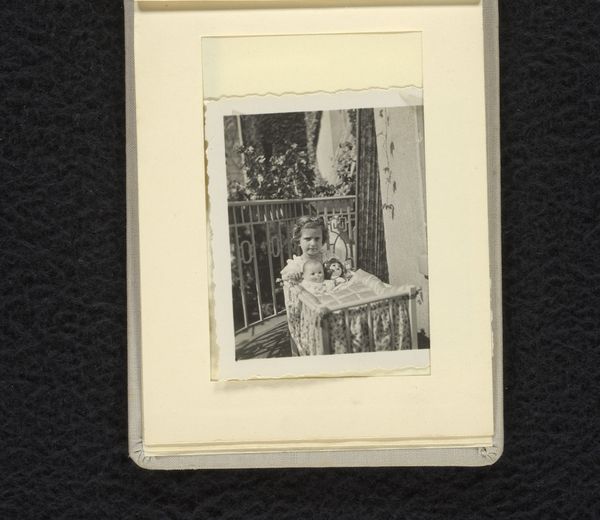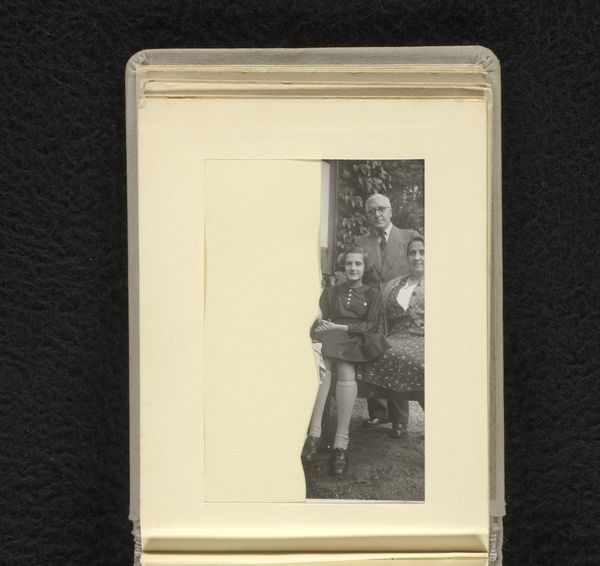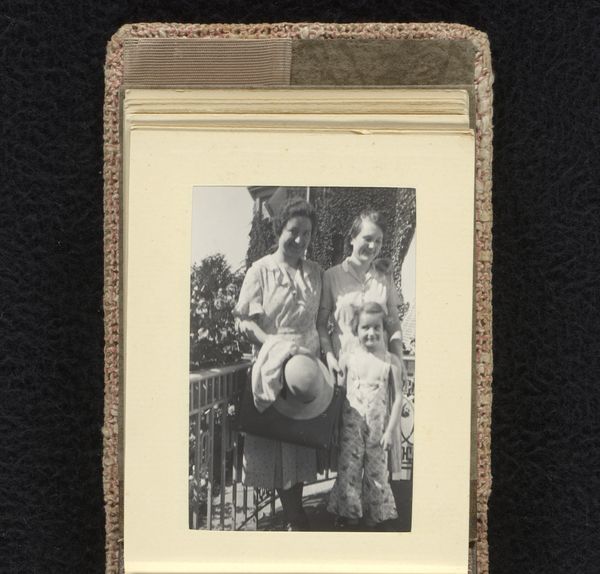
Isabel Wachenheimer zit op een bank met haar oom Willy Moos en een onbekende vrouw, juli-augustus 1933, Hamburg Possibly 1933 - 1937
0:00
0:00
Dimensions: height 65 mm, width 92 mm, height 80 mm, width 106 mm
Copyright: Rijks Museum: Open Domain
Curator: This photograph, possibly taken between 1933 and 1937 in Hamburg, is titled "Isabel Wachenheimer sitting on a bench with her uncle Willy Moos and an unknown woman." Editor: It feels intensely melancholic. The composition is rigid, almost staged, but something about the light and the subjects' expressions… it hints at a deep unease. Curator: Absolutely. Notice the way the photographer positions the subjects, mirroring a visual hierarchy. The man, presumably Willy Moos, is centrally seated, exuding a semblance of authority. Isabel, a child, clings to his side. Above them looms the unidentified woman, literally in the background. These visual relationships speak volumes. Editor: The surface of the photograph itself contributes to that sense of unease. Look at the granular quality, and how it contrasts to the meticulous clothing of each family member: they have dressed very precisely for a moment that could mark immense stress and transition. What about the photograph medium here? The way it allows to portray that scene but also obscure elements with dark and contrasted tones... Curator: The photography and its texture is significant. In German Expressionism, such use of photography often conveyed psychological weight, almost prophetic darkness. And photographs also allowed a type of visual permanence—of families seeking evidence for a home as a form of defiance amid displacement. Editor: Considering that timing – the mid-1930s in Hamburg – this photo transcends a simple family portrait. This visual "family unit," if one can still name it as such here, would perhaps vanish to the terror imposed in Nazi Germany? It underscores photography's crucial role, both as a mode of cultural preservation. Also, a medium able to reflect those visual expressions and transmit to our contemporary perspective their significance and memory. Curator: Precisely. These images, even the seemingly mundane, bear witness to a history of persecution, hope, and profound loss. Editor: Reflecting on this, the picture is so many things – somber, textured, a social testament. There's so much encoded here for us. Curator: Indeed. This photograph serves as a poignant reminder of the personal stories embedded within broader historical narratives, resonating long after the shutter clicks.
Comments
No comments
Be the first to comment and join the conversation on the ultimate creative platform.


